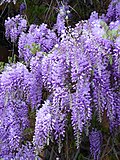The brown-tail moth (Euproctis chrysorrhoea) is a moth of the family Erebidae. It is native to Europe, neighboring countries in Asia, and the north coast...
22 KB (2,738 words) - 20:25, 22 September 2024
The swallow-tailed moth (Ourapteryx sambucaria) is a moth of the family Geometridae. The species was first described by Carl Linnaeus in his 1758 10th...
3 KB (275 words) - 18:09, 2 March 2024
may spill out, causing dermatitis on the surface of the skin. For brown-tail moths (Euproctis chrysorrhoea) native to Europe and invasive in other parts...
17 KB (2,009 words) - 18:22, 24 August 2024
The yellow-tail, goldtail moth or swan moth (Sphrageidus similis) is a moth of the family Erebidae. The species was first described by Johann Kaspar Füssli...
7 KB (636 words) - 10:11, 2 January 2025
used as food by the larvae of some Lepidoptera species including the brown-tail moth.[citation needed] The seeds are produced in pods similar to those of...
26 KB (2,322 words) - 01:41, 22 November 2024
include: Luna moth (Actias luna) Brown-tail moth (Euproctis chrysorrhoea) Coleophora case-bearers, C. laticornella and C. ostryae Regal moths (Citheronia...
21 KB (2,226 words) - 19:04, 21 December 2024
species such as the brown-tail moth. However, it also attacks native, non-pest insects such as the Cecropia moth and American moon moth. Larvae are creamy...
14 KB (1,174 words) - 14:16, 28 October 2024
of the spongy moth, seven of the brown-tail moth, and two predators of both moths became established in the US. Although the spongy moth was not fully...
91 KB (9,468 words) - 22:30, 13 December 2024
hairs range in effect from mild irritation to dermatitis. Example: brown-tail moth. Plants contain toxins which protect them from herbivores, but some...
41 KB (4,307 words) - 11:18, 5 September 2024
lackey moth (Malacosoma neustria) also causes damage to the leaves, sticking its eggs to the bark of thin twigs in multiple rows, and also the brown-tail moth...
32 KB (3,830 words) - 22:13, 25 November 2024
led research on invasive insects, such as the brown-tail moth (Euproctis chrysorrhoea), the gypsy moth (Lymantria dispar), and native insects such as...
6 KB (538 words) - 20:19, 14 November 2022
searching Europe and Japan for natural enemies of the spongy moth and brown-tail moth, establishing parasitoids (such as solitary wasps) and predators...
189 KB (18,249 words) - 21:57, 2 January 2025
species. These include[citation needed]: Brown-tail moth (Euproctis chrysorrhoea) Coleophora case-bearers (moths) C. laticornella (recorded on J. nigra)...
35 KB (3,634 words) - 00:34, 2 January 2025
Lymantria dispar dispar (redirect from European gypsy moth)
as the gypsy moth, European gypsy moth, LDD moth, or (in North America) North American gypsy moth or spongy moth, is a species of moth in the family...
42 KB (4,750 words) - 02:39, 29 December 2024
Death's-head hawkmoth (redirect from Death's Head moth)
These moths are easily distinguishable by the vaguely human skull-shaped pattern of markings on the thorax. They are large nocturnal moths with brown and...
14 KB (1,629 words) - 18:35, 14 December 2024
(Heterocampa manteo), the orange striped oakworm (Anisota senatoria), and the brown tail moth (Euproctis chrysorrhoea). The nut weevils (Curculio spp.), gall-forming...
16 KB (2,037 words) - 11:02, 29 August 2024
pathogens such as green oak leaf roller moth (Tortrix viridana), the gipsy moth (Lymantria dispar) and brown-tail moth (Euproctis chrysorrhoea); these threats...
7 KB (577 words) - 03:06, 30 September 2024
Trametes versicolor (redirect from Turkey tail)
turkey's tail feathers, T. versicolor is most commonly referred to as turkey tail. A similar-looking mushroom commonly called "false turkey tail" is from...
14 KB (1,320 words) - 05:36, 29 September 2024
Bureau of Entomology (section Oriental peach moth)
sweet potato weevil was first discovered in 1875. About 1892, the brown-tail moth was introduced near Boston from Europe. The boll weevil entered Texas...
9 KB (1,118 words) - 18:31, 10 June 2024
he married again. Burgess, A. F.; W. L. Baker (1938). The gypsy and brown-tail moths and their control. U.S. Dep. Agric. Circular 464. USDA. Bourne, A....
2 KB (240 words) - 08:58, 29 November 2021
from Hester Thrale for the brewing of porter. 1782 Spring: Plague of brown-tail moth caterpillars in London area. 10 October: Sarah Siddons makes a triumphant...
170 KB (18,994 words) - 10:02, 28 December 2024
Calliteara pudibunda (redirect from Red-tail Moth)
Calliteara pudibunda, the pale tussock, is a moth of the family Erebidae. The Dutch common name for the moth (Meriansborstel) comes from the butterfly and...
5 KB (478 words) - 14:31, 13 October 2023
The luna moth (Actias luna), also called the American moon moth, is a Nearctic moth in the family Saturniidae, subfamily Saturniinae, a group commonly...
24 KB (3,068 words) - 21:47, 22 December 2024
five eggs in a typical clutch. The rufous-tailed scrub robin is larger than the European robin. It has brown upper parts, whitish under parts, and a prominent...
10 KB (1,249 words) - 18:22, 15 August 2023
control the gypsy moth. M. vesicolor was introduced to the United States in the early 1900s for the control of the brown-tail moth. M. trachynotus was...
5 KB (499 words) - 09:06, 23 February 2023
their historic elms to damage caused by the gypsy moth, the leopard moth, and the brown-tail moth. It was estimated that it would take 50 to 100 years...
39 KB (4,198 words) - 08:52, 28 November 2024
Oak hook-tip (category Moths described in 1767)
attracted to light. The larva is brown with yellow markings and shows the typical drepanid shape with a tapered tail. It usually feeds on oak, but has...
4 KB (337 words) - 07:10, 5 August 2024
Megalopyge opercularis (redirect from Southern Flannel Moth)
distinctive tail. The "fur" of the larva contains venomous spines that cause extremely painful reactions in human skin upon contact. The adult moth is covered...
9 KB (895 words) - 02:50, 27 December 2024
Actias selene (redirect from Indian moon moth)
Actias selene, the Indian moon moth or Indian luna moth, is a species of saturniid moth from Asia. It was first described by Jacob Hübner in 1807. This...
6 KB (539 words) - 06:16, 18 July 2024
Massachusetts: The Brown Tail Moth", Special Bulletin, Hatch Experiment Station of the Massachusetts Agricultural College (1897) "Clothes Moths", published in...
6 KB (453 words) - 01:59, 10 November 2023



























